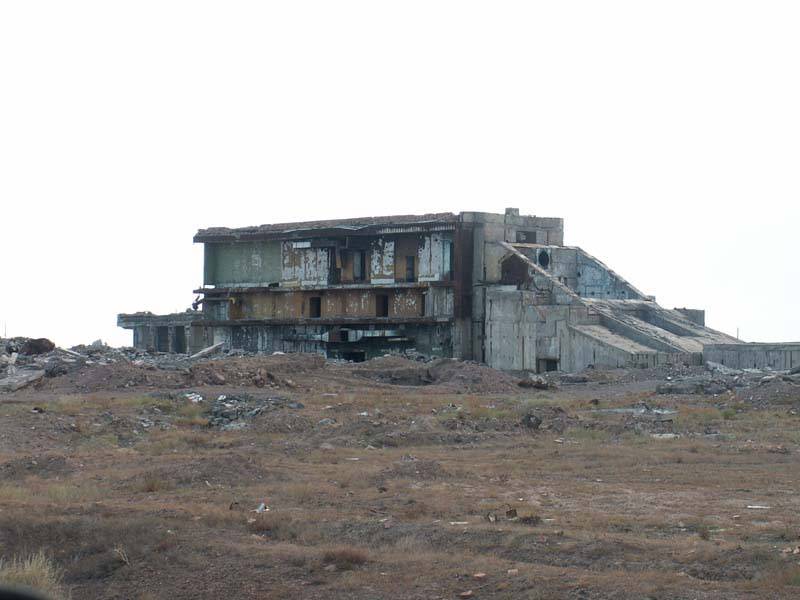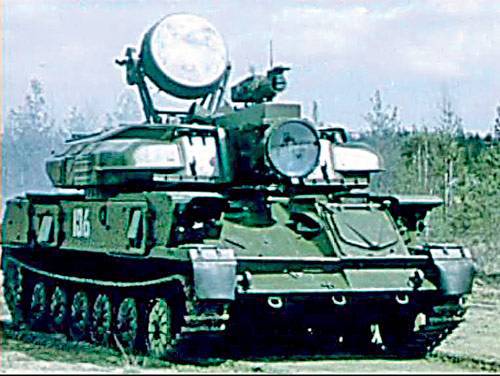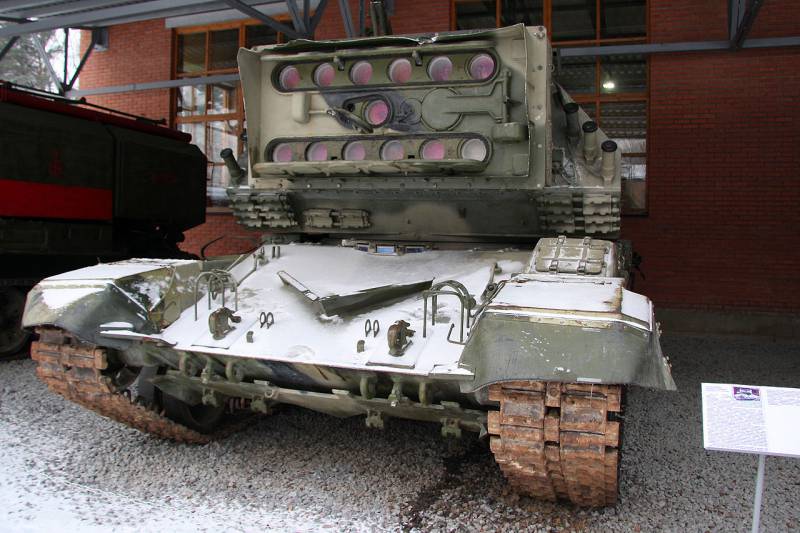News of domestic laser weapons
Last Tuesday, 2 August announced some news on current work and progress in the field of laser weapons. On this day, solemn events dedicated to the 70 anniversary of the Russian Federal Nuclear Center - All-Russian Research Institute of Experimental Physics (RFNC-VNIIEF) took place in Sarov. During the celebration, a number of important statements were made concerning the past, present and future of the armed forces and the defense industry. The most interesting statements of this kind were made by the Deputy Minister of Defense Yuri Borisov.
Y. Borisov said that not so long ago new models of laser weapons were adopted by the Russian army. According to Deputy Minister of Defense, it is not exotic and experimental samples. New products have passed the necessary checks and adopted. The first armament of new types has already entered the troops. At the heart of promising systems are principles that have not previously been used in domestic weapons. Thus, new developments will be able to have a certain impact on the further development of weapons and methods of their use.
Unfortunately, Yu. Borisov did not specify which particular laser weapons were adopted. The military and defense industry are in no hurry to publish data on promising developments in a new direction. This time the Ministry of Defense also did without details. Given the fact that in recent decades several new projects of laser-based weapons systems have been developed in our country, the list of samples that have had a chance to be adopted recently can be quite large.
Another interesting news about the prospects of domestic laser weapons appeared on the eve of the festive events in Sarov. On August 1, Izvestia published excerpts from a conversation with several defense industry experts involved in the development of naval equipment and weapons fleet. In particular, the issue of arming promising ships, the development of which is currently underway, was raised. In the foreseeable future, it is planned to begin construction of promising Leader type destroyers. Some new ideas and solutions can be used in this project, including those that have not yet been implemented in practice.
According to existing plans, new destroyers may receive a nuclear power plant, which will give certain advantages over ships with other systems. In particular, a characteristic feature of such ships will be the possibility of using relatively powerful consumers of electricity. Promising options for equipping and arming ships, which can be used thanks to high-power installation, are already being considered. Izvestiya also notes that the promising Russian destroyer Leader will be comparable to the newest American ship of a similar class Zumwalt in terms of power supply capacity.
It is argued that the high power of the power plant in the future can be used for various purposes, including for supplying energy to new weapon systems. In the future, the destroyers "Leader" will be able to get weapons based on new principles for the Navy. So, it is possible to create electromagnetic weapons or combat laser systems.

The ruins of the complex "Terra 3". Photo Militaryrussia.ru
For obvious reasons, such proposals do not yet go beyond the preliminary proposals and, to the best of our knowledge, have not yet been worked out in the context of real use in re-equipping the fleet. However, in the distant future, original proposals can be brought to the design and subsequent delivery of finished products.
The first samples of laser weapons, according to the latest data, were recently adopted by the Russian army. Nevertheless, work in this area in our country has been going on since the first half of the sixties. For several decades, a number of laser weapons for various purposes were developed, built and tested, but for one reason or another they never reached mass production and operation in the military.
The Terra-3 complex became the first domestic development in the field of laser weapons, which later became widely known. In 1964, it was proposed to study the possibility of hitting the combat units of ballistic missiles in the final part of the trajectory using a laser beam. With the help of several scientific and design organizations, a project was subsequently created for the construction of an experimental complex. Construction at the Sary-Shagan test site began in 1969.
In 1973, a new complex was launched using the laser FO-21, designed to hit targets in the atmosphere and beyond. Over the next few years, specialists collected a considerable amount of information about the operation of laser systems and their prospects. Among other things, during the tests it turned out that the initial task of destroying the warheads of ballistic missiles could not be solved at the current level of technological development. At the same time, experience was gained in the development of laser systems. After 1977 year test program steadily declined, until the complete closure.
In parallel with the project "Terra-3" the complex "Omega" was developed, which had a different purpose and was distinguished by a different composition of equipment. The Omega system was intended for use as part of an air defense and was supposed to attack aerodynamic targets of various types. Tests of the Omega complex began in the first half of the seventies and lasted about ten years. In 1982, the Omega laser first hit a training target in the form of a radio-controlled target. Nevertheless, in spite of the progress achieved, in terms of its characteristics, the laser defense system was significantly inferior to the missile systems of a similar purpose.

Complex SLC "Sanguin". Photo of Wikimedia Commons
In the seventies, work began on self-propelled laser complexes for ground forces. Combat vehicle 1K11 "Stiletto" had a tracked chassis and a special combat module with a laser emitter. Laser equipment was designed to search for optical and opto-electronic devices of the enemy with their subsequent defeat with the help of a directional beam of necessary power. Depending on the mode of operation, could be carried out as a temporary "blinding" of the systems, and their complete failure.
only two cars "Stiletto" was built, were used in the tests. According to some information, the laser complex was put into service at the end of the seventies, but for a number of reasons it was not built in a large series. Available samples were stored for some time at different enterprises, and were later disposed of as useless.
Further development of the "Stiletto" was the complex SLC "Sanguin." A set of new equipment was mounted on the chassis and turret of the ZSU-23-4 Shilka serial anti-aircraft self-propelled gun. To detect targets, it was proposed to use a radar station and the so-called. probe laser. The defeat was made using a combat laser. The design of the Sanguine machine made it possible to attack the optics of ground equipment and combat aviation. At ranges of up to 10 km, irreversible incapacitation of optical systems was ensured, and at long distances — long-term temporary “blinding”.
By the mid-eighties, the prototype of the Sanguin-SLC passed the necessary tests, however, according to the results of inspections, it did not adopt the new equipment. The further fate of the built technology is unknown. It was probably disposed of due to the lack of prospects. On the basis of the Sanguin project, the Aquilon ship complex of a similar purpose was developed.
The latest Soviet attempt to create a self-propelled laser complex was the 1K17 "Compression" project. A large casing was mounted on the tank chassis with the installation using a solid-state laser and an output unit made from 13 lenses. The only prototype of the Compression was built in the early nineties and was tested by the 1992 year, after which it remained out of work. Currently, the car is a unique exhibit of one of the local museums.
In the seventies, started the development of aviation laser complex A-60. This project was proposed to equip the Il-76 military transport aircraft with a set of special equipment in the form of a laser machine and related equipment. In the eighties, two serial aircraft underwent similar modifications. Due to the problems of the nineties, the A-60 project was stopped for a while.
In 2013, there was information about the continuation of work on the aviation laser complex. According to some data, it is planned to re-equip one of the newest IL-76MD-90А aircraft within the framework of the new project called Sokol-Echelon. After that, the car will be flying laboratory, which will participate in the trials. The details of the plans, technical information and deadlines for the work, for obvious reasons, have not yet been announced.
According to recent reports, work in the field of laser weapons and auxiliary systems continues. Its result is both new original proposals and the implementation of full-fledged projects. An example of the first is a hypothetical installation on destroyers "Leader" of laser weapons, and the completion of projects leads to the adoption of new systems. Unfortunately, the details of new projects are still unknown, but such information may appear at any time.
On the materials of the sites:
http://tvzvezda.ru/
http://izvestia.ru/
http://ria.ru/
http://svpressa.ru/
http://otvaga2004.ru/
http://airwar.ru/
http://popmech.ru/


Information